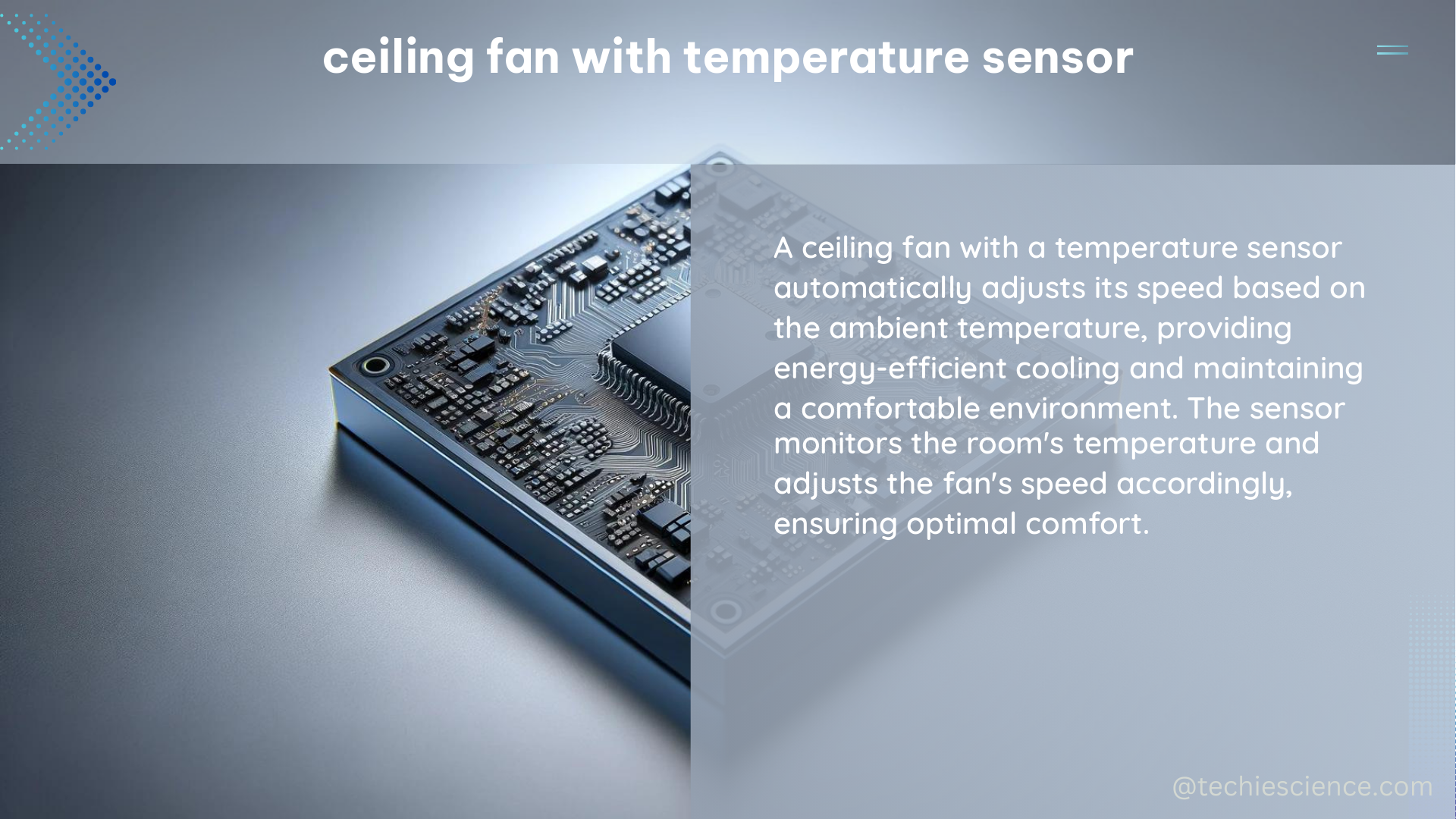Ceiling fans with temperature sensors are a game-changer in the world of home climate control. These innovative devices can automatically adjust their speed based on the room temperature, providing a more comfortable living environment while significantly reducing energy consumption. In this comprehensive guide, we’ll dive deep into the technical specifications, real-world studies, and step-by-step instructions for installing a temperature sensor on your ceiling fan.
Technical Specifications of Ceiling Fans with Temperature Sensors
Ceiling fans with temperature sensors are designed to provide precise and efficient climate control. Here are the key technical specifications you should know:
Temperature Sensor Range and Accuracy
- Temperature sensor range: -40°F to 248°F (-40°C to 120°C)
- Temperature sensor accuracy: ±2°F (±1°C)
Communication Protocols
- Ceiling fans with temperature sensors can communicate using various protocols, including:
- Wi-Fi
- Zigbee
- Z-Wave
Power Consumption and Fan Speed Control
- Power consumption: 8-30 watts
- Fan speed control: 1-6 speeds
Onboard Sensors
- Ceiling fans with temperature sensors often include:
- Onboard temperature sensors
- Occupancy sensors
Compatibility
- These ceiling fans are compatible with smart thermostats and home automation systems, allowing for seamless integration and advanced control.
Real-World Studies and Findings

Numerous studies have been conducted to analyze the performance and energy-saving potential of ceiling fans with temperature sensors. Here are some key findings:
IoT Ceiling Fan Energy Analysis
A study that analyzed the usage pattern and energy consumption of an IoT ceiling fan with temperature, humidity, and infrared sensors found that these fans could achieve the same thermal sensation as traditional fans but with significantly lower energy consumption.
Integrating Smart Ceiling Fans and Communicating Thermostats
Another research project integrated smart ceiling fans and communicating thermostats to identify and test their efficiency. The study found that these highly efficient ceiling fans use as little as 20-30 watts of power, which is significantly less than traditional air conditioning systems.
Cooling and Heating Potential (CP)
The research also introduced the concept of Cooling and Heating Potential (CP), which is the difference between two ambient temperatures at which the same thermal sensation is achieved. The CP allows building engineers and operators to modify temperature setpoints and control sequences when Personal Comfort Systems (PCS) are included in their designs.
Automated Ceiling Fan Operation
Field studies have shown that automated ceiling fan operation, coordinating and sequencing with air conditioning, can achieve multiple operation strategies and commercially available products. The strategy demonstrated in a field study used highly efficient ceiling fans with onboard temperature and occupancy sensors, configured to operate automatically based on occupancy and ambient air temperatures.
Power Consumption and Runtime Analysis
Ceiling fan power consumption and runtime analysis have shown that these efficient ceiling fans use very little electricity, with a mean power consumption of just 8 watts, comparable to that of an LED light bulb.
DIY Installation of a Temperature Sensor on a Ceiling Fan
If you already have a ceiling fan and want to add a temperature sensor, follow these step-by-step instructions:
-
Purchase a Temperature Sensor: Acquire a compatible temperature sensor that can be integrated with your existing ceiling fan.
-
Install the Temperature Sensor: Follow the manufacturer’s instructions to properly install the temperature sensor on your ceiling fan.
-
Connect the Sensor: Connect the temperature sensor to the ceiling fan’s control module or your home automation system.
-
Configure the Settings: In your home automation system or the fan’s control interface, configure the temperature sensor settings and automation rules to suit your preferences.
-
Test the Automatic Operation: Verify that the ceiling fan is automatically adjusting its speed based on the room temperature and occupancy, as per your configured settings.
Remember to always follow the manufacturer’s instructions and safety guidelines when installing or modifying any electrical equipment in your home.
Conclusion
Ceiling fans with temperature sensors offer a smart and energy-efficient solution for climate control in your home. By automatically adjusting the fan speed based on the room temperature, these devices can significantly reduce energy consumption while maintaining a comfortable living environment. With their advanced features, such as onboard sensors, communication protocols, and compatibility with smart home systems, ceiling fans with temperature sensors are a must-have for any modern, energy-conscious household.
References
- “Dataset of usage pattern and energy analysis of an Internet of Things (IoT) ceiling fan with temperature, humidity, and infrared sensors”
- “Integrating Smart Ceiling Fans and Communicating Thermostats for Energy Savings and Demand Response”
- “Test Procedures for Ceiling Fans, Final Rule – Department of Energy”
- “Automatic Ceiling Fan Control Using Temperature and Room Occupancy”
- “Automating a ceiling fan based on temperature differential?” – Reddit discussion

The lambdageeks.com Core SME Team is a group of experienced subject matter experts from diverse scientific and technical fields including Physics, Chemistry, Technology,Electronics & Electrical Engineering, Automotive, Mechanical Engineering. Our team collaborates to create high-quality, well-researched articles on a wide range of science and technology topics for the lambdageeks.com website.
All Our Senior SME are having more than 7 Years of experience in the respective fields . They are either Working Industry Professionals or assocaited With different Universities. Refer Our Authors Page to get to know About our Core SMEs.